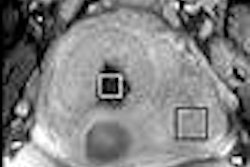Many a facility has penciled its numbers to make a business case for buying a new $1 million or $2 million magnet. Imagine the horror when construction costs for the proposed new magnet -- what is to become the crown jewel -- are found to require hundreds of thousands of additional dollars in the form of interim trailer leasing. More than once this has sent managers back to their pro forma to find a way to support an interim magnet lease.
Yours may be like many MRI facilities that were designed and built prior to our current run of double-digit utilization growth and, at the time, the facilities could never foresee a day when they would need two MRI units. And when that day came, they thought surely there'd never be a need for three! Renovating or expanding MRI facilities can cause disruption to patient access and construction interference. These interferences sometimes require temporarily shutting down some or all of the MRI systems during the renovation.
For both patient care and marketing reasons, a hospital can't simply close the MRI department for weeks or months. It needs to continue to provide the service, or referring physicians and patients will quickly go elsewhere. So when required, hospitals contract with mobile providers on an interim basis to provide a trailer-based MRI suite for weeks or months. But as with MRI equipment itself, interim leases are expensive. Depending on the MRI equipment desired, an interim lease can cost well over $50,000 per month. And lease costs typically do not include the necessary site preparation to accommodate a trailer-based MRI.
This puts a large premium on planning ahead to minimize the potential interruption. This applies to both new and existing facilities. New ones should plan MRI suites for the future and for expansion. Existing facilities should carefully plan out the construction sequence to avoid conflicts with existing equipment and patient care. This isn't to say that there aren't situations in which an interim trailer isn't the best solution, or even the only way to provide MRI services during some construction projects.
A client of ours is facing this situation exactly. A major construction project at the hospital is slated to occur immediately next to the MRI suite, and will involve demolition, utility relocation, excavation, and significant heavy steel erection. Each of these has a high likelihood of interrupting MRI service if unplanned for and mitigated.
Total construction time adjacent to the MRI suite is anticipated to be between 10 and 14 months. Initially, the client had wanted to simply provide MRI services in an interim trailer for the duration of construction. But faced with $500,000 to $700,000 in lease costs for a single magnet, plus the expense of preparing a site for the trailer with appropriate power, communications, and plumbing, the client is now considering means of mitigating the impacts of construction to enable the existing MRI unit to remain in operation during much of the construction project and save between a quarter to a half of a million dollars!
The fact is that every renovation or expansion of an existing MRI suite warrants this sort of evaluation and planning. From the first thoughts of adding equipment, the implications to patient flow and equipment interferences should be considered. These evaluations, when conducted with an experienced design and equipment planning team, can help you foresee the potential financial and patient care obstacles.
Designs for new equipment should anticipate that MRI utilization will continue to grow and additional magnets are inevitable, either at your facility or your competitor's. If you would rather it be yours, then be proactive and plan the location of the third magnet when you install the second. Take the steps to protect the sensitivities of your magnet from future construction interference. The incremental cost to build in additional vibration isolation, for example, is minimal when compared to lost magnet time or the lease costs of an interim trailer.
Sometimes interim trailers are unavoidable and can truly be lifesavers, but too often their use is not anticipated or is poorly planned, causing major financial headaches for facilities. To avoid these headaches, facilities would do well to anticipate the full costs of construction, including incidental and impact costs.
Additionally, with hundreds of thousands of dollars potentially at stake, it is important to have expert assessments of the impacts of planned construction, as well as input on how the design or construction techniques can minimize those impacts. Finally, as part of any project in the MRI suite, facility planners and their architects should be thinking ahead one or two moves, incorporating design elements in today's project that will make tomorrow's project go much more smoothly.
By Tobias Gilk
AuntMinnie.com contributing writer
September 28, 2005
Reprinted from www.mri-planning.com by permission of the authors. If you would like more information on any aspect of MR facility design or safety, please contact Robert Junk or Tobias Gilk at Jünk Architects.
Related Reading
A shocking story of MRI static discharge, September 21, 2005
DI in the OR: The advent of intraoperative imaging, August 31, 2005
Modular done wrong: a $3 million barnacle, August 22, 2005
When good vibrations go bad -- an MRI full of sound and fury, August 2, 2005
Did the MRI community learn from the Colombini tragedy? July 28, 2005
Copyright © 2005 Jünk Architects, PC




















